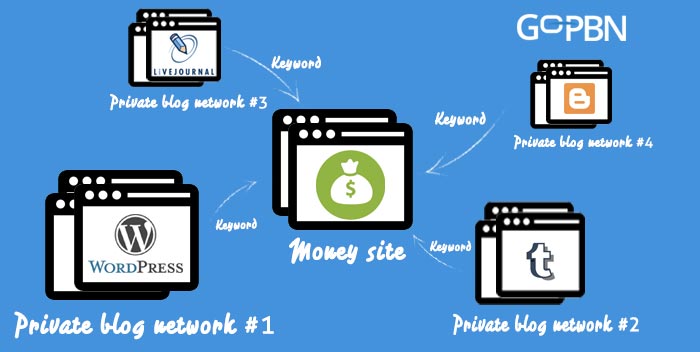All Categories
Featured
Table of Contents
- – What Is The Most Effective Semantic Search And...
- – What Is The Most Effective Semantic Search Ran...
- – What Is The Premier Semantic Seo Content Anal...
- – What Is The Most Reputable Advanced Semantic ...
- – Who Is The Top Semantic Seo Ranking Factors ...
- – Where To Buy The Top Semantic Seo Vs Traditi...
- – Who Is The Top Enhancing Seo With Semantics ...
The internet is transforming, coming to be extra and much more semantic. SEO is likewise transforming and coming to be extra semantic. This is since search engines have developed and are moving increasingly more towards reviewing web content on the internet. Obviously, that has actually additionally changed the method we develop web content, specifically if we wish to rate much better in the search engines.
, the pioneer of the Web, mentioned to represent the concept that all points in deep space are deeply interconnected. Intertwingularity is not normally recognized, people maintain acting they can make points deeply hierarchical, categorizable and sequential when they can not. Whatever is deeply intertwingled. Based on the relationships between search intents, the internet search engine chooses a material ready by calculating the distance between the vectors of significance.
It enables you to see, starting from a subject, all the entities that belong to that subject. By doing this you can plainly see which entities/concepts/ideas have actually currently been covered on your internet site, and you can find brand-new possibilities by recognizing what content you can add and just how to develop it.
What Is The Most Effective Semantic Search And Seo On The Market Now
It has the ability to make your material reasonable for internet search engine on the one hand and for your audience on the various other. Structuring your material design highlights your web content and its hidden connections to ensure that internet search engine can recognize you amongst hundreds of items of details, making you more noticeable to customers who satisfy the search intent pertaining to your company.
In semantic SEO copywriting, an editor starts from a broader variety of topics and customizes the material to include semantically relevant terms and phrases that aid viewers understand a topic, comparable to reading web content in a wiki. From a content writing perspective, one practical method to do this is to develop a vocabulary of terms and concerns bordering your target subject.
What Is The Most Effective Semantic Search Ranking Improvements On The Market Now
Discover more regarding by watching the by!.

Semantic search describes the process of just how online search engine recognize and match keywords to a searcher's intent in natural search engine result. Prior to semantic search, internet search engine like Google operated like matchmakersaligning certain words in your inquiry with those exact words on pages. The outcomes were straightforward however typically did not have depth.
What Is The Premier Semantic Seo Content Analysis Company?
It allows Google to supply quick, exact solutions to browse queries concerning real-world topics. When you kind a query word into Google, you're not simply getting in a series of words.
When you look for "Apple," Google doesn't just see a word that explains a fruit. It recognizes Apple as a company and can offer relevant information. Like the name of its CEO, Tim Cook, or its most current stock prices. Google introduced the Hummingbird update in 2013. It was Google's response to the surge of voice searches, where queries ended up being extra conversational and nuanced.
What Is The Most Reputable Advanced Semantic Seo In The World
By incorporating NLP, Hummingbird permitted Google to relocate beyond simple keyword matching. It aided the search engine comprehend search intent, enhancing the odds that results would properly match the factor behind an individual's search.
RankBrain is a device learning system that aids Google interpret questions it hasn't seen prior to. It can make guesses concerning words and phrases it does not identify and filter results as necessary. Making it much more effective at managing never-before-seen search queries. RankBrain takes into consideration greater than simply key words when analyzing a search query.
It fetches outcomes that match the search phrases and align with the total intent of giving young puppy training recommendations. And if the individual frequently looks for dog-related web content, Google could focus on more thorough training guidesrecognizing the user's continuous rate of interest in the subject. Combining innovations like the Understanding Chart, Hummingbird, and RankBrain, semantic search helps the Google algorithm translate and link information throughout a large internet of details.
Who Is The Top Semantic Seo Ranking Factors Company
The focus changes from keyword option to an all natural technique incorporating customer intent, topical relevance, and total customer experience. Creating material that deals with the searcher's needs with extensive information can boost your SERP positions. Below, we outline the trends and practices that settle the requirement for semantically educated material. Later, we supply workable ideas to transform these understandings right into best practices.
A more comprehensive method to material aligns much better with semantic search's change away from exact keyword matching and toward customer intent. Content that covers search queries more thoroughly not only satisfies customers.
And five times greater than websites that take 10 secs to load. While technological search engine optimization guarantees optimum website performance and availability, concentrating on user experience (UX) takes it an action better. UX intends to produce a visually attractive, user-friendly interface with interesting, quality content that urges site visitors to remain. Semantic search innovation enables internet search engine to go for outcomes that provide the ideal feasible UX.
Where To Buy The Top Semantic Seo Vs Traditional Seo

All display Google's capacity to resolve a topic inquiry thoroughly. By comprehending the context and intent behind user questions, search engines can provide extra pertinent details and potentially increase customer interaction. Personalization in search results page makes for much better UX.Based on your previous search history and preferences as an individual, semantic search aids search engines tailor the results to match your special needs and interests.
So it brings outcomes that match the key words and line up with the overall intent of supplying puppy training suggestions. And if the customer frequently looks for dog-related web content, Google might focus on extra in-depth training guidesrecognizing the customer's continuous passion in the topic. Integrating modern technologies like the Expertise Chart, Hummingbird, and RankBrain, semantic search aids the Google formula translate and link information across a huge web of details.
Who Is The Top Enhancing Seo With Semantics Company?
The emphasis shifts from keyword selection to an all natural method encompassing user intent, topical significance, and general user experience. Developing content that attends to the searcher's demands with thorough details can boost your SERP positions.

And kind of material can best satisfy their needs. A wider approach to content aligns better with semantic search's change far from precise keyword matching and toward individual intent. Which discusses the enhanced concentrate on subject collections, rather than individual keyword phrases. Material that covers search inquiries better not just pleases customers.
UX aims to produce a visually enticing, user-friendly user interface with engaging, quality web content that encourages visitors to remain. Semantic search technology enables search engines to aim for outcomes that provide the best feasible UX.
All showcase Google's capacity to attend to a subject inquiry thoroughly. By understanding the context and intent behind individual queries, search engines can provide much more relevant information and potentially increase customer interaction. Customization in search results page creates much better UX.Based on your past search history and preferences as a customer, semantic search aids online search engine tailor the results to suit your one-of-a-kind needs and rate of interests.
Table of Contents
- – What Is The Most Effective Semantic Search And...
- – What Is The Most Effective Semantic Search Ran...
- – What Is The Premier Semantic Seo Content Anal...
- – What Is The Most Reputable Advanced Semantic ...
- – Who Is The Top Semantic Seo Ranking Factors ...
- – Where To Buy The Top Semantic Seo Vs Traditi...
- – Who Is The Top Enhancing Seo With Semantics ...
Latest Posts
What Are The Highest Rated Implementing Semantic Seo?
What Is The Most Reliable Semantic Tagging For Seo?
What Is The Most Affordable Semantic Seo Content Strategies Deal
More
Latest Posts
What Are The Highest Rated Implementing Semantic Seo?
What Is The Most Reliable Semantic Tagging For Seo?
What Is The Most Affordable Semantic Seo Content Strategies Deal